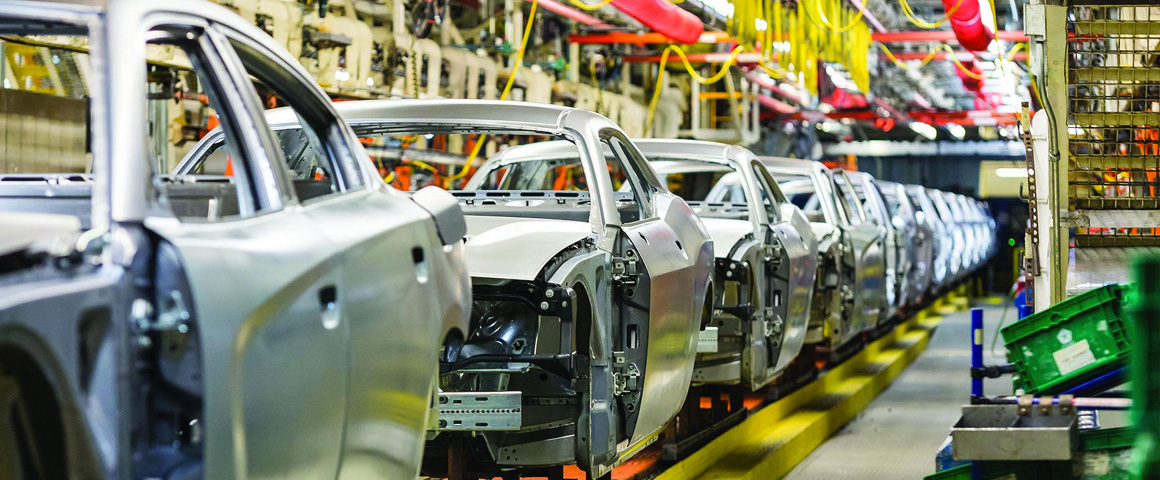Central Trade Union Commission, Communist Party of Canada
Unifor and General Motors reached a tentative contract settlement on Sept. 19, minutes before a strike was to begin at GM’s Oshawa and St. Catharine plants, and its Woodstock parts processing facilities.
Having defined the main issue in bargaining as“continued investment in the Oshawa and St. Catharines plants of GM beyond 2019”, Unifor said the agreement meets this demand.
President Jerry Dias claimed that Oshawa will be the only plant in North America with the ability to produce both cars and trucks, and that the new deal at St. Catharines will bring production from Mexico back to Canada, reversing the trend over the last decade.
Just how solid are the assurances of future production? Estimates say the amount of investment for Oshawa is $400 million, and $120 million for St. Catharines. One of the two lines in the Oshawa assembly plant, the consolidated line, now used to produce the Chevy Equinox, will close. The investment will be to the flex line, used to produce three different cars, and the overflow from the Cami plant in Ingersoll, Ontario. Even if these particular projections materialize, how long will this commitment last?
GM told the Toronto Star “we will be working with government on potential support.” Is the production contingent on government support? No doubt Unifor will actively join in this lobbying for federal and provincial funds. But many activists fear this as a ramping up of ‘tripartism’, or even of ‘strategic support’ for Liberal governments. Some unions already show signs of responding to this siren call.
The Toronto Star also reports that the union negotiated higher wages, a higher starting wage rates and signing bonuses, and that 700 temporary workers will now get full-time jobs. But at what cost?
In the Bargaining Program passed at its second Constitutional Convention in August, Unifor pledged to “resist ongoing employer attempts at ‘two-tiering’ pension plans, which inevitably hurts the next generation of worker”.
Yet somehow “two-tiering” pension plans made it into the tentative agreement. New hires will have a defined contribution pension rather than the hybrid plan (a mixture of both defined-benefit and defined contribution) negotiated in the last round of bargaining.
Dias said, “The only GM employees worldwide that still had a defined benefit plan was us in Canada… When you’re the last survivor, it puts added pressure on … Ultimately, we weren’t going to gamble (on that). There was no question they were planning on closing Oshawa.”
Speaking to CBC’s Metro Morning, he said, “Was it worth it to get new employees the opportunity to get jobs at our wages, at our security level and give up the [defined benefit] plan for new starts? The answer is yes.”
He also said GM’s contribution to the new defined contribution plan will be more than some companies are putting into hybrid plans. “GM is not getting out of this one easy, I can assure you.”
This is at least consistent with the Unifor Bargaining Program, which says that employer contributions to a defined contribution plan should include an additional levy to cover the administration costs and investment risks the employee must take on.
This was GM’s third crack at the pension plan, which it claimed was its biggest liability during the global economic crisis of 2008-9. When the collective agreement was ordered reopened as part of the US and Canadian governments’ bailout packages for GM, indexing of the retired workers’ pensions were eliminated. When over 400 retirees entered the 2012 CAW convention to demand the restoration of indexing, then-Canadian Auto Worker President Ken Lewenza responded by saying in the end, there have to be healthy companies. In the 2013 negotiations, GM agreed to the hybrid pension plan for new hires.
GM was chosen in 2016 to be the lead set of negotiations with the Detroit Big 3 (GM, Ford and Fiat-Chrysler) in order to set the pattern of bargaining. That means pension concessions are in store for Fiat-Chrysler, and then Ford.
The end of the US-Canada Auto Pact (ordered by the World Trade Organization), and the ratification by the Liberals of the North American Free Trade Agreement, increased economic pressures on auto unions to give in on pensions.
But why did Unifor give it up, and why now? GM made record profits of $10 billion in 2015, and $4.8 billion so far this year. Going into bargaining, the slogan of Unifor’s Convention was “It’s Time” to make back the concessions the workers gave the company to help it survive six years ago.
The CAW was founded in 1985 because Canadian workers refused to accept the profit-sharing wages structure negotiated by the United Auto Workers. The CAW demanded and got its traditional $3 per year with a Cost Of Living Allowance.
Many unions merged with the CAW in the 1990s because of the union’s prestige in fighting for its members. When the CAW and the Communications, Energy and Paper Workers (CEP), created UNIFOR, they promised to go on the offensive.
In a Sept. 21 column in the Toronto Star, Thomas Walkom declared the Unifor-GM agreement “A Stake in the Heart of Company Pensions”. He wrote, “…private pension plans fell by the wayside as union after union agreed under duress to trade them away. Throughout, the Canadian Autoworkers — or Unifor as the union is now known — was a kind of beacon. It made strategic retreats. But it never entirely gave up. Now, on the pension front at least, it has … But if even the autoworkers can’t protect their defined-benefit company pension plans, who can?”
The 700 temporary workers who got full-time job are considered new employees, and subject to the defined-contribution pension. That may explain the relatively low 64% ratification vote, which shows some opposition in the membership over the settlement. It shows a willingness to struggle for the future members of the union. Local 707 Unifor at Ford in Oakville has stated that the GM settlement will not be the pattern for the Ford workers.
Contrast the GM settlement to a union which has a tradition of class struggle and social unionism. In negotiations with Canada Post this past summer, the Canadian Union of Postal Workers were able to defend their defined-benefit pension plan.
CUPW was also able to address the issue of pay equity for rural members, mostly women, who make 25% less than the urban workers, mostly men. The result: a joint committee will implement changes within 19 months.
CUPW’s bargaining took place in the context of a federal review of Canada Post, which could fundamentally change the nature of the business. The Harper-appointed Canada Post board seems hell-bent on preparing the grounds for potential privatization of the Post Office. Such a prospect would be allowed under the terms of the Trans-Pacific Partnership. Instead, CUPW has proposed alternative options. In its “Delivering Community Power”, which puts the needs of the community first, one option is to provide a network of stations where electric cars could recharge. This would provide a market for the production of such cars in Canada. CUPW President Mike Palecek said at a May Day forum in Ottawa that he had made such a proposal to Unifor.
CUPW’s successes are a signal that progressive change is possible.
The potential for mass struggle for a people’s agenda is evident in Canada and Quebec: the 2012 student strike in Quebec; the CFS-Ontario mobilization for free education; the Idle No More movement; Black Lives Matter struggles in Quebec and Ontario; the US-inspired Fight for $15 movement which has spread across the country.
The labour movement had pledged full support for Unifor going into its negotiations. Rather than relying on the good graces of the Trudeau or Wynne Liberals for “fairness”, the trade union movement can and must become the catalyst to bring together all sections of the working class into a powerful, fighting united front. It can reach out to indigenous people, students, racialized workers to fight for a people’s agenda that will challenge corporate power.
Over the past couple of decades, workers at dozens of private sector workplaces have drawn a line in the sand around their defined benefit pensions. There have been many lengthy and heroic sacrifices to fight off transitional two-tier attacks against pensions. Many of these struggles – in mining, smelting, manufacturing, etc – have lasted for months, even years. There have been successes, but increasingly few and far between. There have been closures and downsizings.
Should we therefore conclude that “resistance is futile”? That “there is no alternative”? That to avoid the hardship of strikes and the risk of job losses, by trading long-term acquiescence at the bargaining table for short-term gains and assurances, “makes us smart”?
Communists believe that the struggle for liveable, sustainable pensions is a vital component of our overall struggle for a decent life for working families. It’s vital to protect and build upon what previous generations have already won through bitter struggle. We have to fight smart, but we must fight. This is particularly important now in the public sector, where governments increasingly target “over-generous” and “unsustainable” pension plans.
We recognize that in this era of corporate neo-liberalism, high unemployment and precarious jobs, to rely on employers for our old age security (as for health coverage) makes less and less sense, and creates significant inequalities. The labour movement, and the whole working class community, have to redouble the pressure for an urgent and radical overhaul of the Canada Pension Plan. The CPP must become the defined benefit plan that covers all Canadians. The modest tinkerings recently promised by the current federal government are woefully inadequate for this social purpose. Billions of dollars must be injected, and the basis of qualification has to be totally reformulated.
This is not to let private employers of the hook. They should pay the freight for shirking their social responsibility. As an integral part of the regenerationain of the CPP, corporate tax cuts must be reversed, and their direct contributions to the fund sharply increased.
For this fight, too, the labour movement is called upon to mobilize its members for struggle and sacrifice. Another world is possible!




